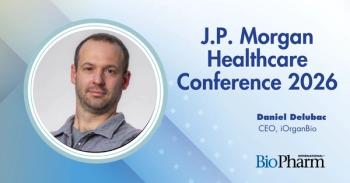
- BioPharm International-02-01-2020
- Volume 33
- Issue 2
Challenges in Vector Purification for Gene Therapy
Developers need to transcend the limits of existing separation technologies, to maximize vector recovery while preserving therapeutic potency.
The downstream processing of viral vectors used in gene therapy poses tough challenges, including the limitations of existing separation and purification technologies. Even though there are many different ways to purify viral vectors, these processes all suffer from drawbacks: either they lack the scalability required to purify large quantities of vector or they require numerous inefficient steps, making them cost prohibitive. Scalable purification technologies are needed that are robust, cost-effective, and applicable to different gene therapy products (i.e., to both viral and non-viral vectors) (1–3).
For viral vectors, size is a limiting factor in downstream processing. Viral molecules are far larger and heavier than other therapeutic proteins that undergo separation and purification. Where the size range for proteins typically runs from 0.005 to 0.08 x 106 Da, viruses often exceed 5 x 106 Da, and some can be as large as 1000 nm (3). As a result, developers cannot simply put viral molecules through the same processing steps using the equipment used for antibodies or other therapeutic proteins and expect similar results.
Over the years, size-based viral purification strategies have included density-gradient ultracentrifugation, ultrafiltration, precipitation, two-phase extraction systems, and size-exclusion chromatography (SEC). Affinity chromatography is often favored as a more viable process because of its robustness and high selectivity. However, it requires the use of resin, and currently, there exist only a small number of single-serotype targeted affinity resins (i.e., resin that can be used for only one virus serotype). In order for the process to be economically viable, the resin must be reusable multiple times and be applicable to multiple serotypes (1,4).
Virus types
Four main types of virus, each with multiple serotypes, have been studied for use as vectors in gene therapy: adenovirus, lentivirus, retrovirus, and adeno-associated virus (AAV). The most widely used is AAV, which has shown great potential as a gene-delivery vehicle in clinical studies (1, 4).
AAVs can primarily be released by cells in the upstream cell-culture process without the need for lysis, which simplifies harvesting and purification steps by minimizing the amount of cell debris. However, without cell lysis, some AAVs may remain inside the host cell, and require intentional disruption of the cell membrane to release product. What’s more, AAV particles can be sticky and adhere to cell debris in the culture media, which can cause low yields downstream.
Biological challenges
One of the greatest challenges in viral vector production occurs during transfection, when the genetic material for the therapy is introduced to the viral vector. This has to do with the viral capsids within which the genetic material is encapsulated. Vectors that do not take up the genetic material will remain empty and be processed along with the full vectors downstream, which can result in final dosage forms that contain a mix of empty and full vectors.
Whether they are full or empty, viral capsids exhibit similar measurable biophysical properties, making it difficult to distinguish between them, and separate them. So far, the industry has not standardized on an optimal full-to-empty ratio for capsids, leaving uncertainty as to how variability in that ratio affects patient dosing. A large number of empty vectors, for example, may result in patients needing a higher dose of the therapy, which can place unnecessary stress on the immune system, and potentially lead to adverse immune responses.
At present, only a few commercially available resins are offered that can separate full from empty viral capsids during chromatography (2).
As research continues into understanding the nuances of viral biology, the industry can expect to see improvements in the types of downstream processing technologies that can be used to purify viral vectors for gene therapy. Smarter strategies may incorporate combinations of traditional approaches with new technologies leading to the development of robust and economical platforms.
References
1. O. Terova, et al., Cell Gene Therapy Insights 4 (2) 101–111 (2018).
2. J.A. Hernandez-Bort, “Challenges in the Downstream Process of Gene Therapy Products,” AmericanPharmaceuticalReview.com, June 25, 2019.
3. R. Morenweiser, Gene Therapy 12, S103–S110 (2005).
4. M.F. Naso, et al., BioDrugs. 31 (4) 317–334 (2017).
Article Details
BioPharm International
Vol. 33, No. 2
February 2020
Pages: 22–23
Citation
When referring to this article, please cite it as F. Mirasol, “Challenges in Vector Purification for Gene Therapy,” BioPharm International 33 (2) 22–23 (2020).
Articles in this issue
almost 6 years ago
Managing Risk for Cell and Gene Therapy Logisticsalmost 6 years ago
The Call for a Rapid Responsealmost 6 years ago
Data Management Practicesalmost 6 years ago
Biopharma Analysis Benefits from New Technology and Methodsalmost 6 years ago
Cell Therapies: The Living End of Growth Opportunitiesalmost 6 years ago
Fresh Thinking in Biologic Drug Formulationalmost 6 years ago
The Need for Advanced Process Modeling for New Therapeutic Biologicsalmost 6 years ago
Cell Culture Variables for Gene Therapy Vectorsalmost 6 years ago
Global Supply Issues Create ChallengesNewsletter
Stay at the forefront of biopharmaceutical innovation—subscribe to BioPharm International for expert insights on drug development, manufacturing, compliance, and more.




